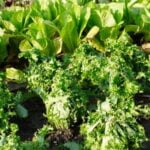As the temperatures start to cool down and the leaves begin to change color, it’s time to start thinking about your fall vegetable garden. Having a fall planning calendar is essential to ensure a successful harvest in your fall vegetable gardening endeavors. Planning ahead and understanding the unique growing season of fall can make a significant difference in the outcome of your garden.
Fall vegetable gardening offers a wealth of benefits, from extending the growing season to enjoying fresh produce well into the cooler months. By having a clear plan outlined in your fall planning calendar, you can make the most out of this season and maximize productivity in your garden. Understanding when to plant, how to care for your crops, and when to expect harvests are all crucial aspects that a well-structured calendar can help with.
In this article, we will delve into the importance of having a fall planning calendar for your vegetable garden and explore how it can streamline your gardening efforts. From selecting the right vegetables for fall planting to maintaining your garden throughout the season, we will provide valuable tips and insights to help you create a bountiful fall harvest. Stay tuned as we guide you through the essential tasks and techniques for successful fall vegetable gardening.
Importance of Having a Fall Planning Calendar
Fall vegetable gardening can be a rewarding and enjoyable activity for gardeners looking to extend their growing season. One key element to successful fall vegetable gardening is having a fall planning calendar in place. A fall planning calendar helps gardeners stay organized, schedule appropriate tasks, and maximize the potential of their fall harvests.
Planning for Success
Having a fall planning calendar allows gardeners to strategically plan out their planting schedule, ensuring that they make the most of the shorter fall growing season. By mapping out when to plant specific vegetables based on their maturity rates and cold tolerance, gardeners can optimize their garden space and harvests.
Managing Time Efficiently
A fall planning calendar helps gardeners allocate time effectively by breaking down tasks into manageable steps. This includes preparing the soil, starting seeds indoors, transplanting seedlings, weeding, watering, and protecting plants from pests or frost. With a well-planned calendar in place, gardeners can stay on track and ensure that no crucial step is missed during the fall growing season.
Adapting to Changing Conditions
The beauty of having a fall planning calendar is its flexibility to adapt to changing weather conditions or unforeseen circumstances. By regularly updating and adjusting the schedule based on factors like temperature fluctuations or unexpected precipitation, gardeners can proactively address challenges that may arise during their fall vegetable gardening endeavors.
Understanding the Fall Growing Season
The fall growing season offers a unique opportunity for gardeners to continue enjoying fresh produce well into the cooler months. Understanding the specific characteristics of this season is crucial in order to maximize the success of your fall vegetable garden. With the right knowledge and planning, you can ensure a bountiful harvest even as temperatures begin to drop.
To make the most of the fall growing season, it’s important to take into account factors such as temperature changes, daylight hours, and frost dates. Having a clear understanding of when these conditions typically occur in your region will help you choose the most suitable vegetables for planting in the fall. Consider creating a checklist or calendar to keep track of these important dates and tasks.
Below are some key considerations to keep in mind when planning your fall vegetable garden:
- Research frost dates in your area to determine when temperatures are expected to drop below freezing.
- Choose cold-hardy vegetables that thrive in cooler weather, such as kale, carrots, broccoli, and Brussels sprouts.
- Consider using row covers or other protective measures to extend the growing season for more tender crops.
By understanding the unique conditions of the fall growing season and selecting appropriate vegetables for your garden, you can set yourself up for a successful harvest. Stay organized with a fall planning calendar to stay on track with essential tasks and enjoy a productive and rewarding fall vegetable garden.
Choosing the Right Vegetables for Fall Planting
Fall vegetable gardening presents a wonderful opportunity to continue growing and harvesting fresh produce well into the cooler months. When selecting vegetables for fall planting, it’s essential to choose varieties that thrive in lower temperatures and shorter days. Some vegetables are particularly well-suited for fall planting, such as broccoli, cauliflower, kale, carrots, beets, and various types of lettuce.
One key factor to consider when choosing vegetables for fall planting is the average first frost date in your region. By determining this date and working backward from it, you can select vegetables with shorter maturation times that will be ready for harvest before the frost sets in. This strategic approach will help maximize your garden’s productivity and ensure a bountiful fall harvest.
In addition to cold-hardy crops, consider incorporating varieties that are resistant to common fall pests and diseases. By choosing disease-resistant vegetables, you can reduce the likelihood of issues impacting your garden later in the season.
It’s also beneficial to select vegetables that have a longer storage life, allowing you to enjoy your homegrown produce well beyond the fall months. Planning ahead and selecting the right mix of vegetables will set you up for success in your fall garden.
| Vegetable | Planting Time |
|---|---|
| Broccoli | 6-8 weeks before first frost |
| Kale | Mid to late summer for fall harvest |
| Carrots | Late summer to early fall for winter storage |
Tips for Creating Your Fall Planning Calendar
Fall vegetable gardening requires careful planning and organization to ensure a successful harvest. One of the key elements in this process is creating a fall planning calendar. This calendar will help you stay on track with sowing, planting, maintenance, and harvesting tasks throughout the season. By breaking down these tasks into manageable chunks and scheduling them in advance, you can maximize your garden’s potential and yield.
When creating your fall planning calendar, consider factors such as your local climate, first frost date, and specific requirements of each vegetable variety you plan to grow. Start by determining your desired harvest dates for each crop and work backward to identify important milestones such as planting dates, estimated maturity times, and any additional care needed. Be sure to factor in possible delays or unexpected events that may impact your schedule.
In addition to time-sensitive tasks like planting and harvesting, your fall planning calendar should also include reminders for routine maintenance activities such as watering, fertilizing, weeding, pest control, and disease prevention. Monitoring the progress of your vegetables regularly will help you address any issues promptly and maintain a healthy growing environment. Remember that flexibility is key when following a fall planning calendar, so be prepared to adjust your schedule as needed based on changing conditions or unforeseen circumstances.
| Important Task | Timeline |
|---|---|
| Plant cold-hardy vegetables | 4-6 weeks before first frost |
| Protect tender crops from frost | 1-2 weeks before first frost |
| Harvest mature crops before frost damage | Prior to first frost date |
Essential Tasks for Fall Vegetable Gardening
Fall vegetable gardening requires careful planning and maintenance to ensure a bountiful harvest. As the temperatures cool down and daylight hours shorten, there are specific tasks that need to be completed to nurture your fall garden. Here are some essential tasks to include in your fall planning calendar:
- Prepare the soil: Before planting any vegetables, it’s crucial to prepare the soil by adding compost or organic matter to improve fertility and drainage. Test the soil pH and make any necessary adjustments for optimal growth.
- Plant cool-season crops: Fall is the perfect time to plant cool-season vegetables such as broccoli, kale, carrots, and lettuce. Make sure to follow spacing guidelines and provide adequate water for newly planted seeds or seedlings.
- Protect against pests and diseases: As the weather cools, pests may seek shelter in your garden. Implement pest control measures such as row covers or organic sprays to prevent damage to your crops. Keep an eye out for early signs of disease and address them promptly to protect your plants.
In addition to these tasks, it’s important to stay on top of regular maintenance routines such as watering, weeding, and mulching throughout the fall season. By staying organized and following a detailed fall planning calendar, you can maximize the success of your fall vegetable garden. Remember that consistency is key when it comes to caring for your plants during this transitional season.
Maintaining Your Fall Garden Throughout the Season
As the fall season progresses, it is essential to maintain your fall garden to ensure the health and productivity of your vegetable plants. One key aspect of maintaining your fall garden throughout the season is regular watering. While the cooler temperatures of fall may result in less evaporation, it is still crucial to provide consistent moisture to your plants, especially during dry spells. Be sure to water deeply and at the base of the plants to encourage strong root development.
In addition to watering, monitoring for pests and diseases is another important task when maintaining your fall garden. Fall can be a susceptible time for certain pests, such as aphids and caterpillars, as they seek refuge from cooler weather. Regularly inspecting your plants for any signs of pest or disease infestations will allow you to take action promptly and prevent any widespread damage. Consider using organic pest control methods to protect both your plants and beneficial insects in your garden.
Furthermore, ongoing care for your fall garden includes regular weeding and mulching. Weeds can compete with your vegetable plants for nutrients and water, so staying on top of weed control will help your vegetables thrive. Applying a layer of mulch around your plants can help suppress weed growth, retain soil moisture, and regulate soil temperature.
Additionally, mulch can also provide some insulation for root systems as temperatures fluctuate throughout the fall season. By staying proactive in maintaining these tasks in your fall garden, you can set yourself up for a successful harvest later in the season.
Harvesting and Enjoying the Fruits of Your Labor
As the fall season progresses, the excitement of harvesting your fall vegetable garden starts to build. This is the time when all your hard work throughout the growing season culminates in a bountiful harvest. To make the most of this rewarding experience, it’s crucial to have a well-planned approach to harvesting and enjoying the fruits of your labor.
Harvesting at the Right Time
One of the most important aspects of successful fall vegetable gardening is knowing when to harvest your crops. Different vegetables have different indicators for optimal harvest time, such as color, size, and texture. For example, root vegetables like carrots and beets are usually ready to harvest when their tops begin to protrude from the soil. Leafy greens like lettuce and kale are best picked when they reach a certain size but before they become bitter.
Enjoying Your Fresh Produce
After harvesting your crops, it’s time to enjoy the fresh flavors of your homegrown vegetables. Whether you’re incorporating them into meals immediately or storing them for later use, savoring the taste of freshly harvested produce is truly satisfying. Fall vegetables like pumpkins can be used in pies or roasted for a delicious side dish.
Brussels sprouts can be pan-fried with bacon for a savory treat. The possibilities are endless when it comes to enjoying the fruits of your labor from your fall vegetable garden.
Preserving Your Harvest
To make your fall vegetable gardening efforts last even longer, consider preserving some of your harvest through methods like canning, freezing, or pickling. By preserving excess produce, you can enjoy homegrown vegetables throughout the winter months when fresh options may be limited. Additionally, sharing preserved goods with friends and family is a great way to spread joy and showcase the results of your hard work in the garden during the fall season.
Conclusion
As we come to the end of our discussion on fall vegetable gardening and the importance of a fall planning calendar, it’s clear that this season offers a wealth of benefits for both seasoned gardeners and beginners alike. By following a well-thought-out schedule and selecting the right vegetables for fall planting, you can enjoy a bountiful harvest and extend your gardening season well into the cooler months.
One of the key advantages of fall vegetable gardening is the opportunity to continue enjoying fresh, homegrown produce long after the summer months have passed. With proper planning and care, you can cultivate hearty crops that thrive in cooler temperatures, such as kale, carrots, and Brussels sprouts. Not only will you be able to savor the flavors of your labor, but you’ll also save money on grocery bills by growing your own nutritious vegetables.
In conclusion, embracing fall vegetable gardening with a carefully crafted fall planning calendar can bring countless rewards to your table and your overall well-being. From the joy of watching your garden flourish to the satisfaction of reaping what you sow, this season offers a unique chance to connect with nature and nourish both body and soul.
So why not seize the opportunity this year to create your own autumn oasis and experience firsthand the many benefits that fall vegetable gardening has to offer?
Frequently Asked Questions
What Vegetables Can You Plan in the Fall?
In the fall, you can plant a variety of vegetables in your garden. Some common options include broccoli, cauliflower, kale, carrots, radishes, lettuce, spinach, and Brussels sprouts. These vegetables thrive in cooler temperatures and can withstand light frosts.
When Should I Start My Fall Vegetable Garden?
The ideal time to start your fall vegetable garden depends on your location and the specific vegetables you plan to grow. Generally, you should aim to plant cool-season vegetables about 6-8 weeks before the first frost date in your area. This could mean starting in late summer or early fall.
How Do I Prepare My Vegetable Garden for the Fall?
To prepare your vegetable garden for the fall season, begin by cleaning up any debris from the previous growing season and removing any weeds that may have taken hold. Consider adding compost or organic matter to improve soil health and fertility.
Check for proper drainage and water retention capabilities in your garden beds. Finally, plan out what vegetables you want to grow and make sure they are suitable for the fall climate in your region.

If you’re looking to get into vegetable gardening, or are just looking for some tips on how to make your current garden better, then you’ve come to the right place! My name is Ethel and I have been gardening for years. In this blog, I’m going to share with you some of my best tips on how to create a successful vegetable garden.





